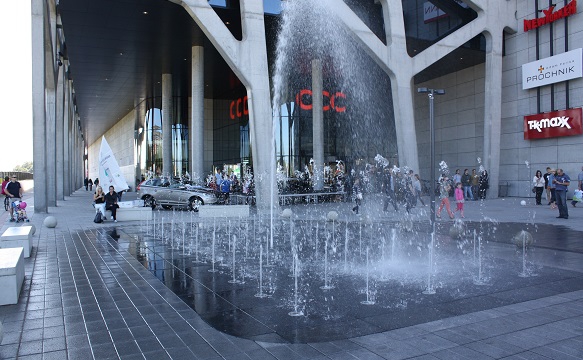The COVID-19 pandemic has locked people in their homes, partially making them dependent on passive forms of spending free time within four walls. Fortunately, the number of infections with the Wuhan virus is gradually decreasing, and the restrictions that discouraged outdoor activities will soon disappear. So it’s worth asking yourself how to re-motivate people to get out of their homes and meet outdoors. Properly developed public space can come to the rescue, which will be diversified by small architecture made of concrete.
Concrete pots with the desired greenery in them
There is no doubt that at the beginning of the COVID-19 pandemic, people began to miss contact with nature more than ever – the carefree joy of communing with it could basically only be felt by the chosen ones who had their own gardens or plots. Residents of tenement houses, blocks of flats, skyscrapers and apartment buildings located in cities were not so lucky. However, they appreciated the advantages of spaces such as squares, parks and woonerfs – especially if they gained access to new places of this type or those under revitalization. The great attractiveness of such zones has been increased by, m.in others, new plantings. Interestingly, introducing them does not require destroying previously established lawns or flower beds. Concrete pots are a solution thanks to which any public space can be greened relatively quickly and easily. Concrete pots allow you to introduce plantings even to completely raw zones, which were previously covered only by asphalt and paving slabs.

Small architecture made of concrete
When designing new squares, squares, parks, promenades and woonerfs, as well as revitalizing the existing ones, decorations that will give them expression will be as important as planting. It is worth noting here that public space “likes” decorative elements made of concrete – especially since noble concrete is a durable and extremely functional material that in many practical respects surpasses wood, stone or steel. No wonder that small architecture made of concrete has been present in urban fabrics for years and occurs in many forms. Concrete fountains are a kind of oases that attract walkers with their attractive appearance and soothing sound of water. Concrete balls add energy to even the least attractive squares and parks, and various types of concrete slabs work well both in flat surfaces and staircase structures or three-dimensional elements. Concrete is definitely likeable!

Division of public space
A considerable problem faced by designers of urban zones and others is the division of space. After all, you need to find a place for pedestrians, cyclists or people in wheelchairs, but also for lawns, plantings, playgrounds or outdoor gyms. A great idea to separate them from each other is to use small elements of small architecture made of concrete. Concrete walls, plinths and curbs clearly delineate the boundaries between zones, reducing the risk of accidental intrusions into hard-to-maintain lawns and flower beds. Such decorative elements made of concrete diversify the public space both visually and functionally, making it more friendly to family walks and outdoor meetings.
Meeting places – concrete benches, chessboard, bicycle racks
Speaking of meetings – parks, squares and squares functioning in the urban fabric should absolutely be conducive to them. Therefore, it is worth making sure that the public space encourages interaction and making new friends. It would be great if the aforementioned fountains were surrounded by comfortable concrete benches in the number adapted to the traffic intensity in a given place, and in their close vicinity, there were practical trash cans equipped with ashtrays appreciated by smokers. It can also be a great idea to invest in barbecue tables conducive to social gatherings and entertainment elements, such as ping-pong tables or concrete chessboards. These and other elements of small architecture made of concrete should appeal to all residents and make the public space better appreciated and more willingly visited by them.
Properly developed public space wins the hearts of not only residents who use it every day, but also tourists. Thanks to small architecture made of concrete, it can be easily greened, divided or diversified with decorations, but also – adapted to the needs of people in the field of outdoor meetings. Squares, parks and woonerfs with the elements based on noble concrete mentioned in the article should attract crowds and emanate positive energy, which we all need so much after the COVID-19 pandemic.
